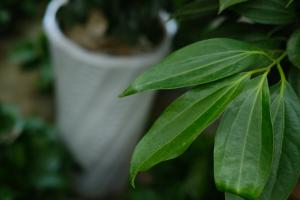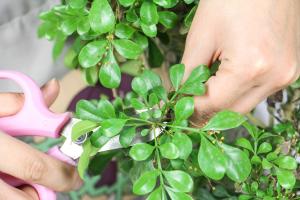How to Care for Sensitive Plant
Sensitive plants, also known as Mimosa pudica, are unique plants that move their leaves and even fold up when touched or disturbed. While they look interesting, they require a bit of extra care due to their sensitivity. Here are some tips on how to care for sensitive plants.
Watering
Sensitive plants require consistent and even moisture to thrive. Water the plant thoroughly once a week or as soon as the soil feels dry to the touch. Use a watering can with a narrow spout to avoid getting water on the leaves, as this can cause damage. Avoid overwatering, as this can lead to root rot and kill the plant.
Light and Temperature
Sensitive plants prefer bright, indirect light. Avoid exposing them to direct sunlight, as this can scorch the leaves. The ideal temperature for sensitive plants is between 60 and 85 degrees Fahrenheit. Keep them away from drafty windows or air conditioning vents, as sudden temperature changes can stress the plant.
Humidity
Sensitive plants thrive in moderate to high humidity. If the air in your home is dry, consider using a humidifier or placing a tray of water near the plant to increase the moisture in the air. Avoid misting the leaves, as this can cause rot.
Fertilizer
Sensitive plants do not require fertilizer, but if you choose to use it, do so sparingly. Use a balanced, water-soluble fertilizer and dilute it to half strength. Apply it once a month during the growing season.
Pruning
To keep your sensitive plant healthy and bushy, trim the leaves and stems regularly. Use clean, sharp scissors to make clean cuts. Avoid cutting more than one-third of the plant at a time.
Pests and Diseases
Sensitive plants are vulnerable to spider mites, aphids, and mealybugs. Regularly inspect the plant for signs of infestation, such as webbing, sticky residue, or tiny insects. If you spot an infestation, isolate the plant immediately and treat it with an insecticidal soap or horticultural oil.
Propagation
Sensitive plants can be propagated from stem cuttings. Take a 4- to 6-inch cutting from the plant, strip off the leaves from the bottom half, and place the cutting in a pot filled with moist soil. Keep the soil moist and the cutting out of direct sunlight until it develops roots.
In conclusion, sensitive plants are fascinating plants to care for, but they require a bit of gentle care to thrive. Remember to water them consistently, provide moderate humidity, and protect them from drafts and direct sunlight. With proper care, your sensitive plant will reward you with its unique movements and beautiful foliage.

 how many times do yo...
how many times do yo... how many planted tre...
how many planted tre... how many pine trees ...
how many pine trees ... how many pecan trees...
how many pecan trees... how many plants comp...
how many plants comp... how many plants can ...
how many plants can ... how many plants and ...
how many plants and ... how many pepper plan...
how many pepper plan...






























